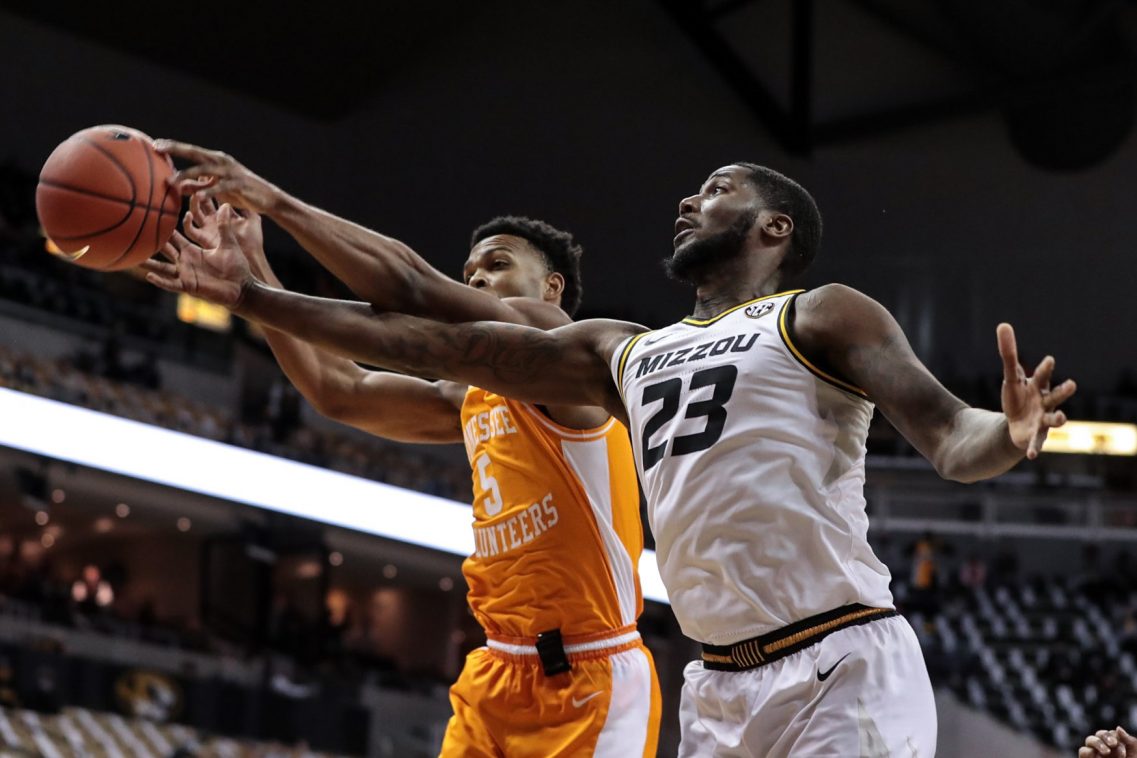The Vols did their thing against Missouri, leading by 19 in the first nine minutes, 25+ for stretches of the second half, and 20 at the final buzzer. It wasn’t close, but it could’ve been closer in one regard: Missouri got to the line 30 times, but only made 18 of them.
It’s only the second time all year a team had more than 20 free throw attempts against the Vols, and the first was a function of pace: Saint Joseph’s went 15-of-21 at the stripe in 78 possessions, ten more than the Vols’ current average. File that away for the next two games, when Alabama and Arkansas will both try to speed things up and shoot a ton of threes. It’s the right order to catch it in, I think, as the Hogs do it better than the Tide so you ramp up along the way. It did not, however, work for St. Joe’s, who scored 66 points but gave up 102.
So I’m not worried about teams that try to run and gun with the Vols. But if we’re realistically at the point of trying to earn a number one seed in the NCAA Tournament, it’s worth diving into any possible weakness. It’s not foul trouble alone; Tennessee is deep enough to handle that, I think. But getting to the stripe is by far the best way to try to score on Tennessee.
Last year Tennessee was 1-7 when their opponents shot 27 or more free throws. The lone victory came against Arkansas, who shot a season-high 36 against the Vols, but Tennessee shot 30 themselves. You had to really get up there two years ago, but Tennessee was 1-4 when teams shot 30+ free throws in 2019. Four of those five games went to overtime, and it’s interesting to note that none of them shot it particularly well when they arrived, including Purdue’s 16-of-33 at the stripe in the Sweet 16. Obviously, some of this makes sense if you’re fouling down late. But it still holds true that when Tennessee’s best team got in trouble, it showed up mostly clearly at the line.
It’s a trade Rick Barnes’ teams have often made at Tennessee, whether by preference or personnel: emphasize aggressive defense, try to force turnovers, and hope you come out in ahead in the balance on the whistle. It is, in may ways, the opposite of what Cuonzo Martin’s defenses did at Tennessee: defend without fouling and eliminate offensive rebounds. Instead of not giving a team any second chances, Barnes’ Vols – especially this team – prefer to create turnovers on the first chance.
His first team was average in both regards, but starting in 2017 the Vols have been whistled more often. Via KenPom, here’s Tennessee’s national rank in free throw rate allowed under Barnes:
| Year | FT Rate |
| 2021 | 69 |
| 2020 | 248 |
| 2019 | 232 |
| 2018 | 264 |
| 2017 | 321 |
| 2016 | 180 |
Even what we thought of as a really good defensive team in 2018 struggled here. No surprise, they went 2-4 when allowing 29+ free throw attempts.
Keep an eye out next week: the Vols go to Texas A&M, currently third in the nation in offensive free throw rate with Emanuel Miller one of the best in the nation at drawing fouls. For the Vols, this has mostly been a backcourt issue with Vescovi and Keon Johnson picking up the quickest whistles, but per minute those honors belong to backup post players in Anosike and Nkamhoua.
But here again, the Vols put Mizzou on the stripe 30 times…and won by 20. Right now the weaknesses go under the microscope, both because this Tennessee team is capable of so much, and so far it’s the only way to see them.

